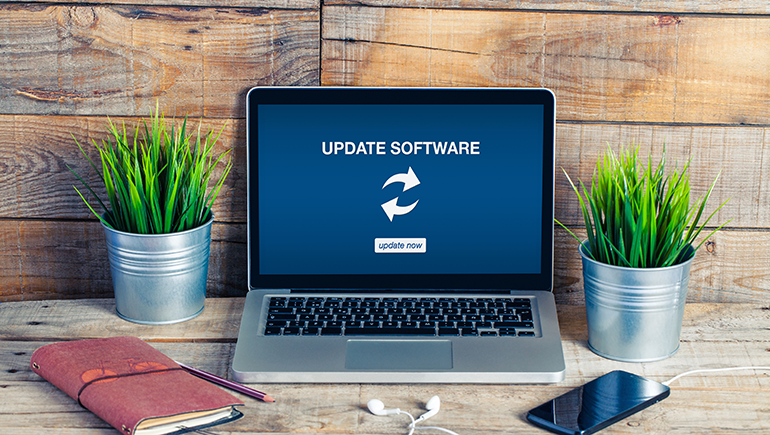Stay cyber secure: Keeping your apps up to date can protect your data
At a glance (3 minute read)
- Keeping your software and operating system up to date helps prevents cyber criminals from access your data.
- Protect your data by allowing automatic updates.
- Configure your automatic updates so they don't interfere with your work.

We’ve all been there – you’re working on a CMA for a client or putting some documents together in WEBForms, when a software update pops up and asks you to reset your computer.
Typically, you’d click the “remind me later” option. But before you do, understand that those software updates can save you from a potential cyber attack.
Why does software need to be up to date?
Software updates don’t just add new features or bug fixes to the programs you use every day. They also patch up cracks in the program’s security that cyber criminals can use to access your device.
From there, they can steal passwords, personal information, and more.
Operating systems, like Windows, macOS, Android, or iOS, are particularly important to keep up to date because they’re the most common targets for cyber attacks.
Keep your software up to date without interrupting your work
Modern software usually has the option to automatically update. Sometimes this feature will install updates in the background or prompt you to restart the program when an update is available.
Most programs allow you to set a regular time to check for and install updates. This will prevent update notifications from popping up at a bad time.
You should also periodically check your software to ensure its up to date.
How to check for updates, and set auto updates for most major operating systems
Mac (macOS Catalina)
Checking for updates
- Open the Apple menu and select About this Mac.
- Click Software Updates....
- If any are available, you’ll have the option to install it.
Setting up automatic updates
- Open the Apple menu, select System Preferences, then click Software Update.
- Select Automatically keep my Mac up to date.
- To keep all your App Store apps up to date, click Advanced and select all of the following:
- Check for updates
- Download new updates when available
- Install macOS updates
- Install app updates from the App Store
- Install system data files and security updates
- Click OK
Windows 10
Checking for updates
- Open the start menu and select Settings.
- Select Update & Security Settings then select Windows Update.
- Click Check for Updates. If any are available, you’ll have the option to install it.
Setting up automatic updates
- Open the start menu and select Settings.
- Select Update & Security Settings then select Windows Update.
- Automatic updates are on by default. You will see a notification here if they’re turned off. To turn them on, select Advanced Options, then under Choose how Updates are Installed, select Automatic.
- You can also set your Active Hours here, which will prevent Windows from automatically restarting during this time.
iOS (iPhone)
Checking for updates
- Open the Settings app and tap General.
- Tap Software Update.
- If any are available, you‘ll have the option to install it.
Setting up automatic updates
- Open the Settings app and tap General.
- Tap Software Update.
- Make sure Automatic Updates is set to On.
- To set up your device to update overnight while charging, select Automatic Updates and turn on Download iOS updates and Install iOS updates.
Android (Samsung)
Note: Android’s settings menu varies depending on your phone. This guide is for Samsung phones.
Checking for updates
- Open the Settings app and select Software Update.
- Tap Check for Update. If any are available, you’ll have the option to install it.
Setting up automatic updates
- Open the Settings app and select Software Update.
- Select the gear icon in the top right-hand corner.
- Make sure Auto Download and Install isn’t set to Do Not Allow.
- To set apps to auto update, open the Play Store.
- Select your profile image in the top right-hand corner.
- Select Settings.
- Select Network Preferences.
- Make sure Auto-update apps isn’t set to Don’t allow.


